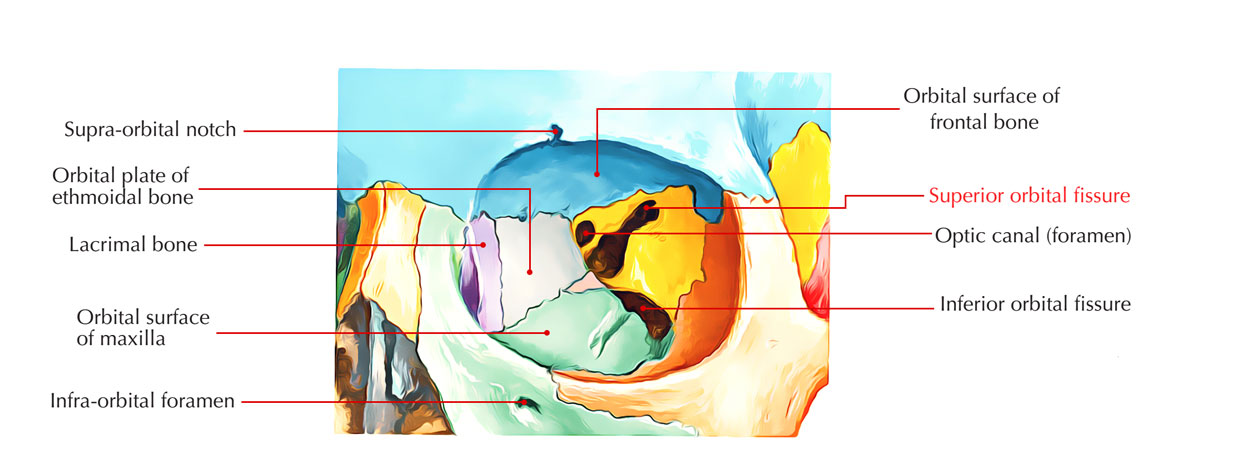The superior orbital fissure is travels from the apex of the orbit laterally, anteriorly, and superiorly. This fissure divides the greater as well as lesser wings of the sphenoid and is located in the middle of the optic foramen and the foramen rotundum.

Superior Orbital Fissure
Relations
It is much greater at its medial portion. It gives a pathway for many structures:
- Superior ophthalmic vein
- Lacrimal nerve
- Frontal nerve
- Trochlear nerve
- Abducent nerve
- Oculomotor nerve
- Nasociliary nerve.
It is divided into 3 portions:
- Lateral part conveys:
- Superior ophthalmic vein
- Lacrimal nerve, frontal nerve
- Trochlear nerve (CN IV)
- Recurrent meningeal division of lacrimal artery
- Middle part conveys
- Superior and inferior divisions of the oculomotor nerve (CN III)
- Nasociliary nerve
- Abducent nerve
- Medial part conveys:
- Inferior ophthalmic veins and sympathetic nerves originating from the plexus.
Functions
Three motor nerves travel towards the extraocular muscles of the orbit through this fissure:
- Oculomotor nerve (CN-III)
- Trochlear nerve (CN-IV)
- Abducens nerve (CN-VI)
Similarly, the ophthalmic branch of the trigeminal nerve (CN VI) inserts the orbit via this fissure.
Clinical Significance
Superior orbital fissure syndrome / Rochon–Duvigneaud syndrome
The superior orbital fissure syndrome or Rochon–Duvigneaud syndrome includes lesions that are found directly anterior towards the orbital apex, together with the structures leaving the annulus of Zinn and frequently the ones located external towards the annulus.
Multiple cranial nerve palsies may be seen including without optic nerve pathology:
- Oculomotor nerve (III)
- Trochlear nerve (IV)
- Abducens nerve (VI)
- Ophthalmic branch of the trigeminal nerve (V1)
Risks
Whenever the cranial nerves that traverse the superior orbital fissure get involved, many alternate results may arise:
- Diplopia
- Paralysis of extraocular muscles
- exophthalmos
- Ptosis
Blindness or loss of vision shows association of the orbital apex, a more serious condition that demands urgent surgical intrusion. The condition is called orbital apex syndrome, in case blindness is found alongside superior orbital syndrome.

 (58 votes, average: 4.53 out of 5)
(58 votes, average: 4.53 out of 5)